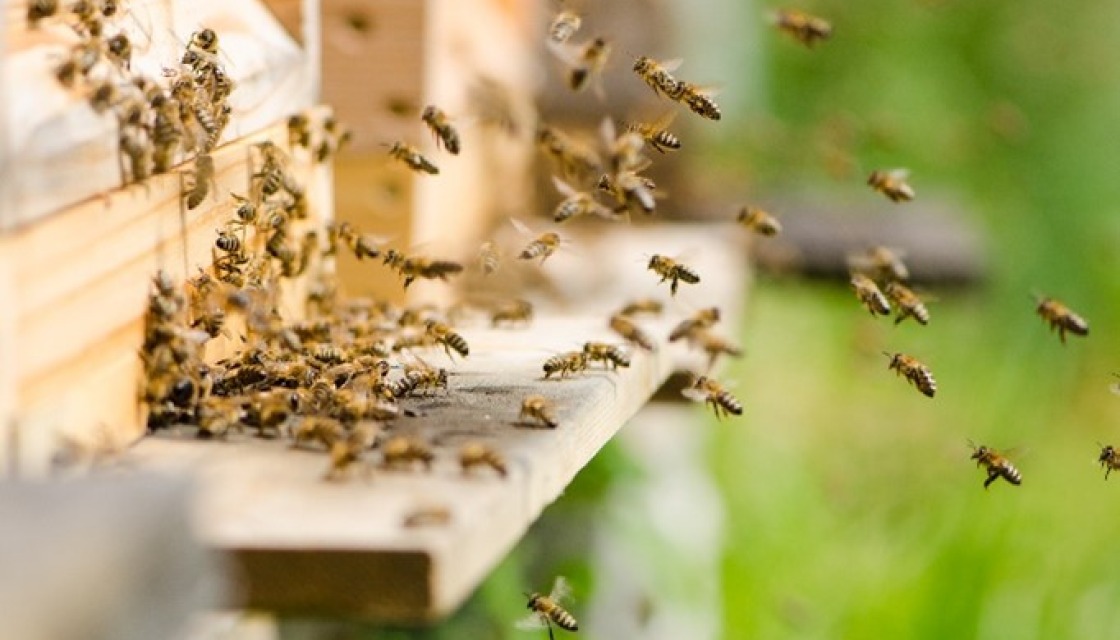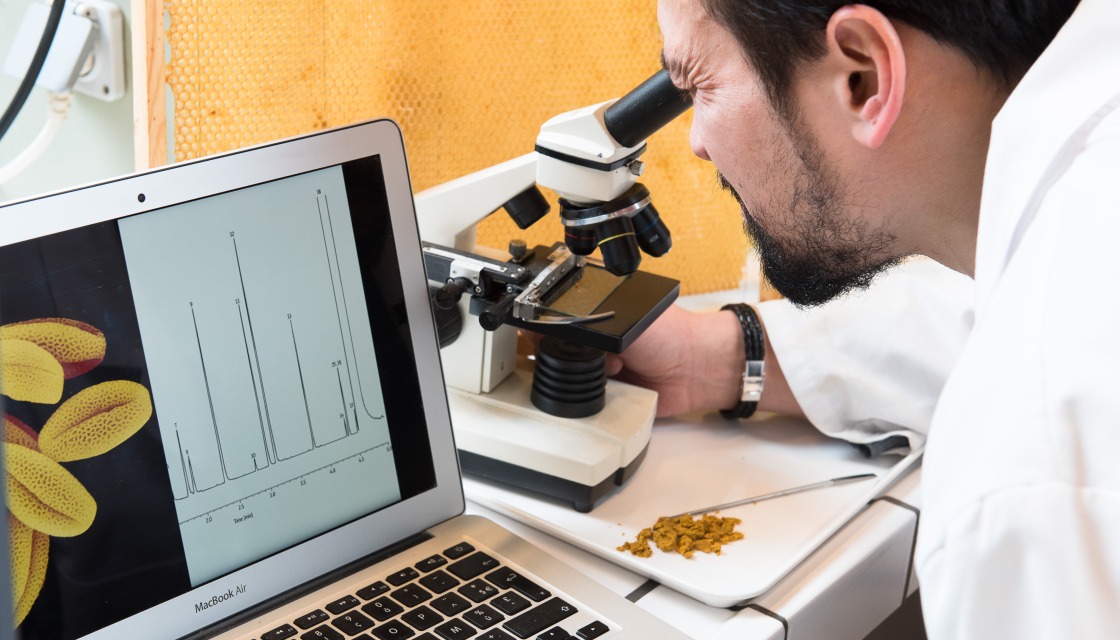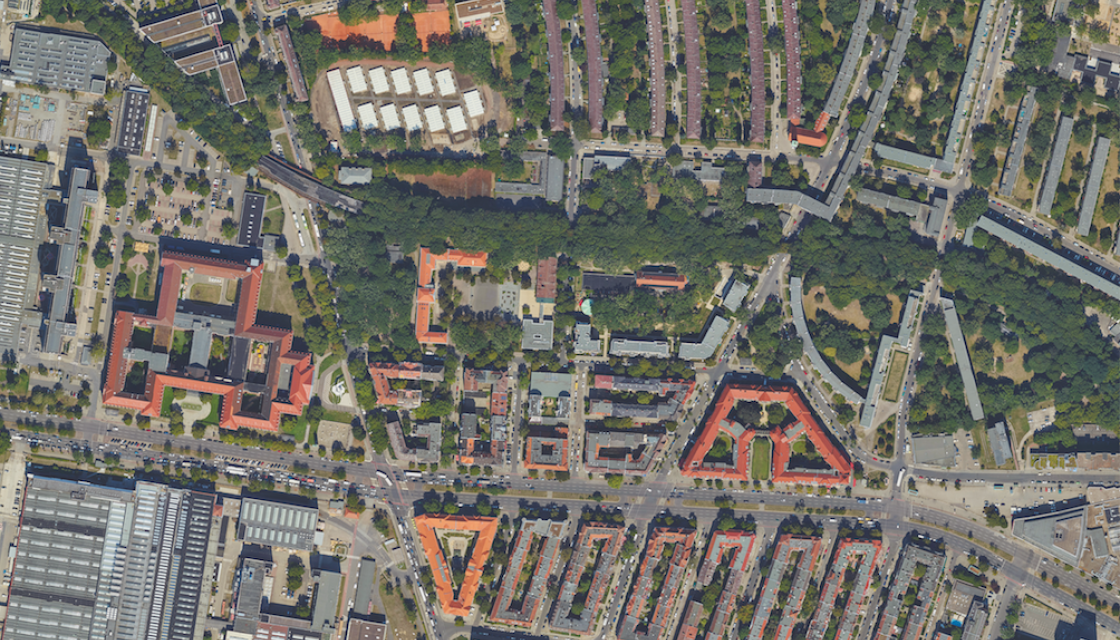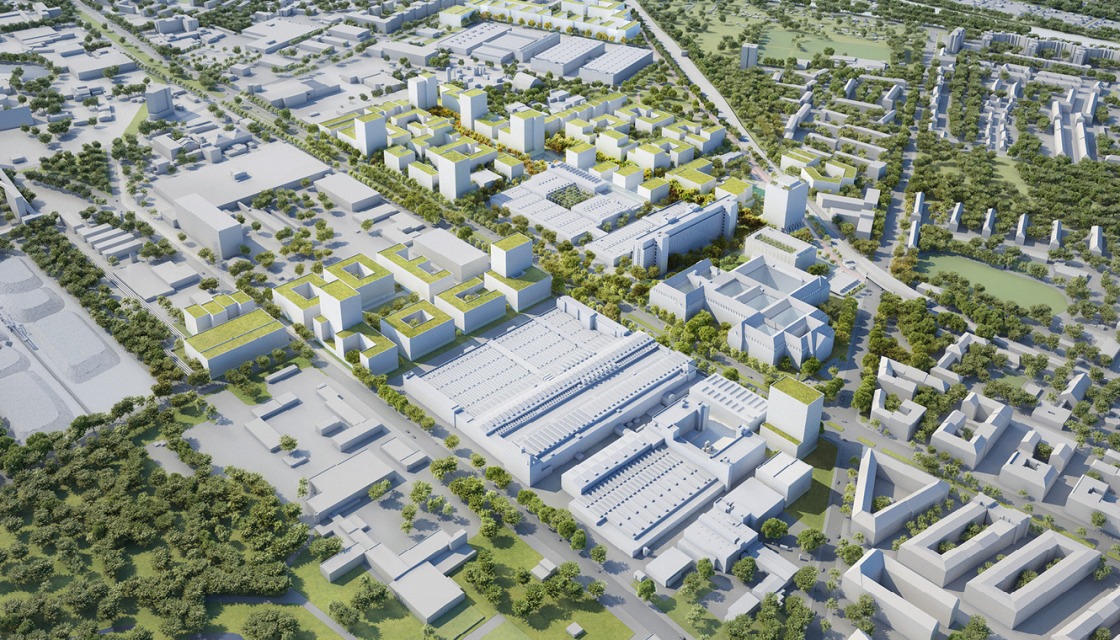
Not only were they the first residents of Siemensstadt Square, they are also among the most hard-working employees: In 2021, 80,000 honey bees moved into the new city district for the first time. From April to October, they fly from the roof of the Dynamowerk into Siemensstadt Square and the immediate vicinity. However, the bees only produce honey on the side: Their actual job on the team is to collect information on plant biodiversity in Siemensstadt.

Biodiversity is usually recorded by experts by means of intensive observation in the field. However, because this is very time-consuming and often incomplete, the Siemensstadt Square team is using an innovative new method: DNA metabarcoding. In this process, genetic material from a biological sample is automatically evaluated in the laboratory and compared with an extensive database. This generates a lot of information about the composition of the species in the sample in a short time. Scientists around the world increasingly use this method for environmental analysis and are working to standardize the new procedure.
Natural drone meets high-tech laboratory
Siemensstadt Square is using the method in collaboration with the Belgian company BeeOdiversity. The young company uses DNA metabarcoding to analyze plant species in honey bee pollen. A device on the hive periodically scrapes off pollen samples when the bees return from collecting (the bees are not harmed in the process). BeeOdiversity analyzes the pollen in its laboratory on a molecular level and compares it with an extensive database of European and other plant species. Experienced biologists verify the results and summarize them four times a year.

The result: an image of the plant biodiversity in the area. Although only flowering plants are recorded, because these are especially important food sources for insects and other species, the analysis is meaningful for the overall biological diversity. The evaluation in four phases shows whether the insects have a balanced supply of food over the course of the year.
Plant diversity in Siemensstadt
The first evaluation in 2021 brought very good results. BeeOdiversity discovered 58 different plant species in the pollen of our bees. Compared with all urban study areas that BeeOdiversity monitors, Siemensstadt Square achieved a "very good" score. The proportion of wild plants was 74 percent. That puts the area in a good range as well, because wild and native species are often more resilient to climate change than ornamental and exotic plants. They also provide the best food for the local fauna.

Like other future residents of Siemensstadt Square, the bees move beyond our project boundaries. The high biodiversity of their flight area can be explained in part by the structurally rich green landscapes of the Faule Spree, the Werner von Siemens Park, the many allotments, and the overgrown S-Bahn line in the area. "The new district will aim to link and supplement the neighboring biotopes in order to make our urban ecological system more resilient," explains Alyssa Weskamp, sustainability expert on the Siemensstadt Square team. "So far we haven’t had to correct any major gaps in our planting plans, because the food supply is already balanced over the course of the year and the proportion of wild plants is good. As part of our biodiversity concept, we will continue to monitor the situation with the help of our bees to see if things change. If necessary, we can adjust the range of species we will plant on site.”

New hive scale determines the condition of the bees
Since the end of April 2022, the two bee colonies have been flying through our future location again – this year with another innovation that helps monitor their work and their health. A beehive scale now gives us real-time information about the weight of the beehives. "This allows us to determine the honey yield in relation to the initial parameters," explains beekeeper and Siemens employee Ingo Buschmann, who looks after the Siemensstadt Square bees. “At the same time, by comparing average parameters and checking the brood chamber temperature, we can determine how busy the bees are. This will let us know if they are doing well, and we can take countermeasures if that is not the case.”